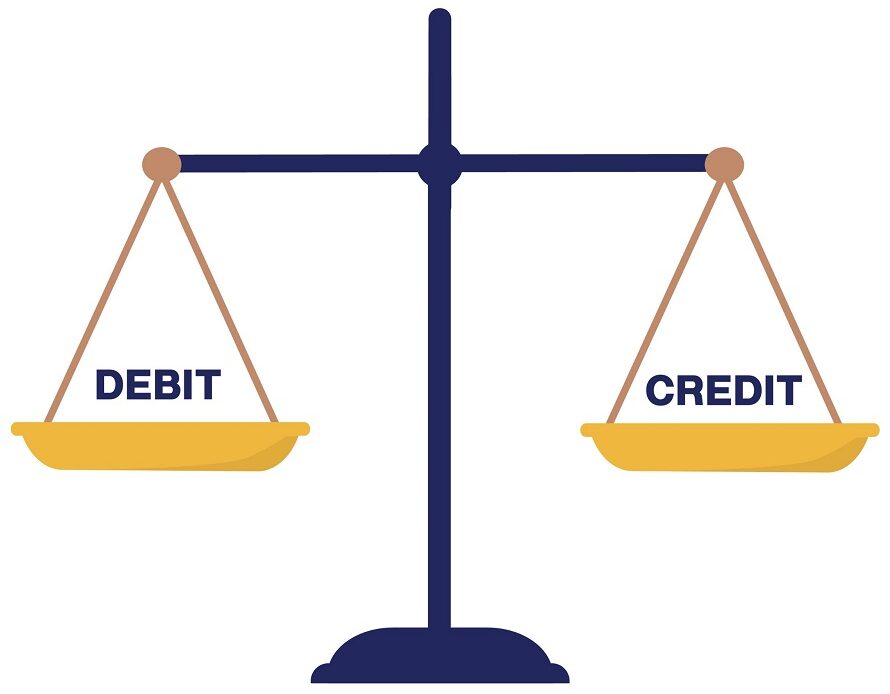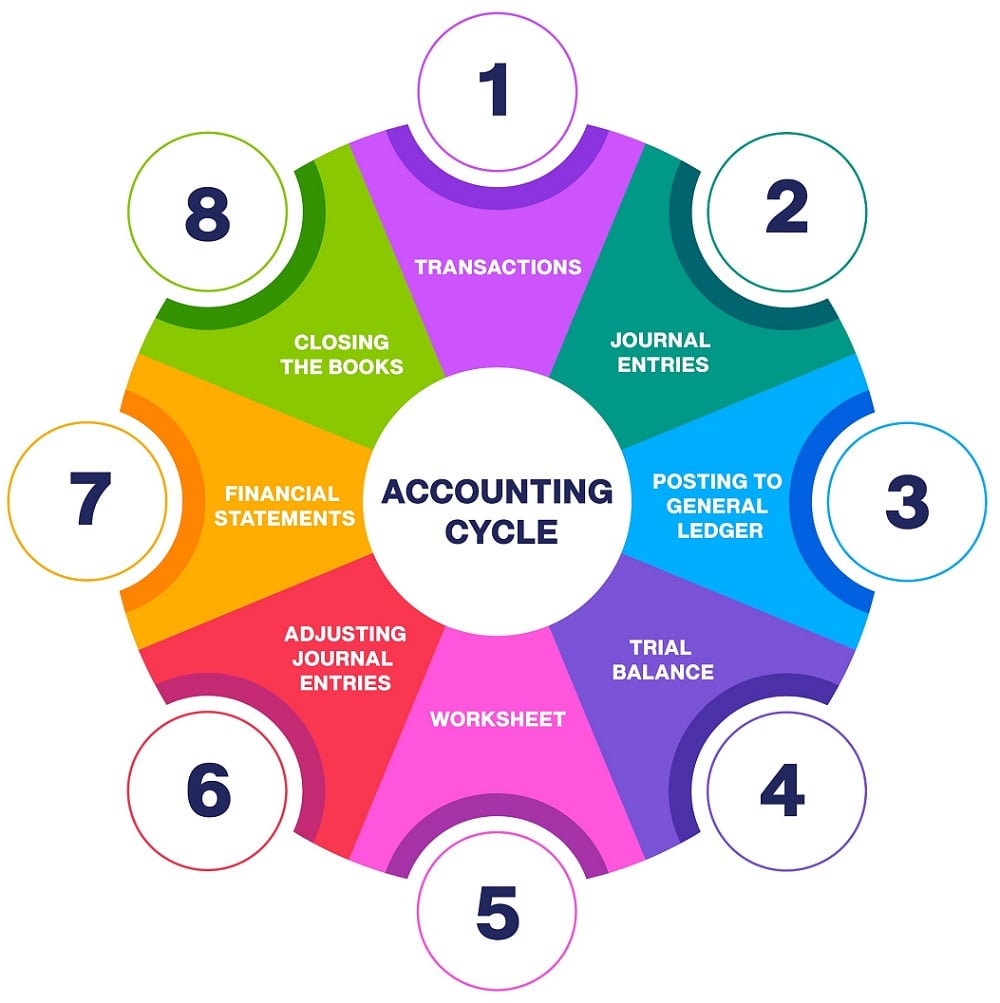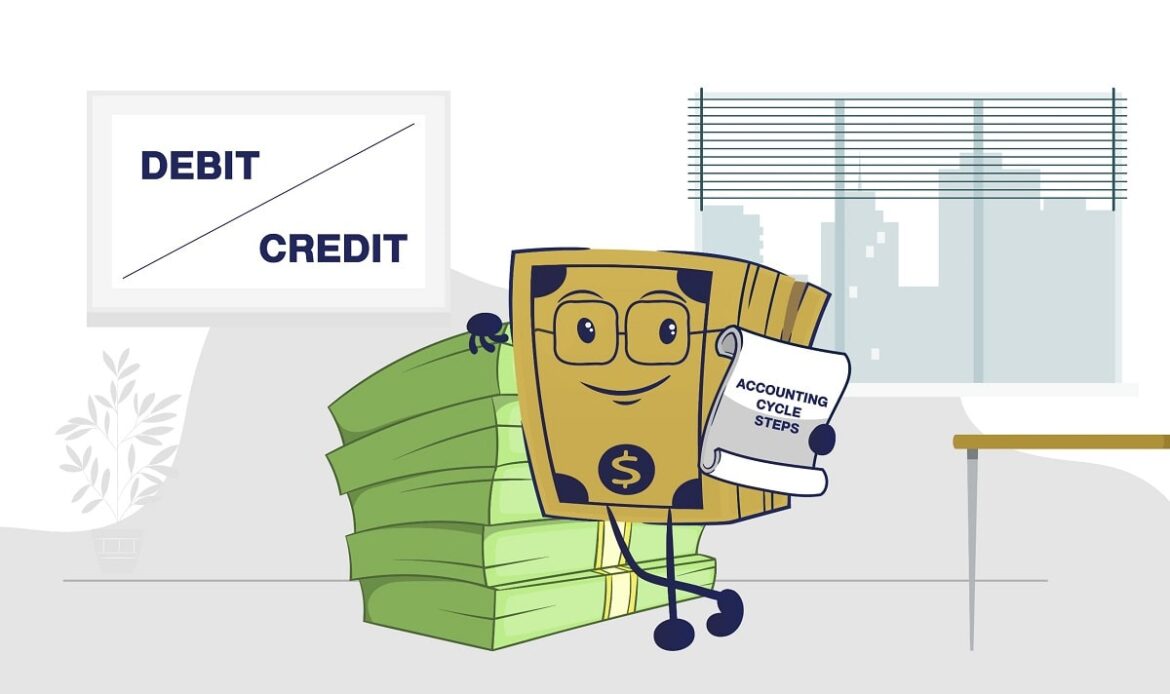Businesses and corporations of all sizes should always be on top of their finances. And that’s where accountants and accounting come into play. From accounting standards to bookkeeping and more, there’s a lot to consider to ensure the financials are working smoothly. So today, we’re gonna talk about the accounting cycle steps that every company follows a variation of! You might be familiar with some of it, and learning all about the others to complete the image for you. Now, let’s get into it, shall we?
What Is the Accounting Cycle?
The accounting cycle is a process that consists of 8 steps to complete a company’s bookkeeping tasks. This process provides guidelines that help with the recording and analysis of a company’s financials. A cycle’s length can vary based on every company’s preference. Some opt for a monthly cycle, while others find a quarterly or yearly cycle more important. But the most vital thing to know is that once one cycle closes, the next one immediately opens. And naturally, bookkeepers are there to keep an eye on the company’s day-to-day financial position while they conduct the accounting cycle.
What Are the Accounting Cycle Steps?
1. Transactions
First of all, financial transactions are what kicks off the whole accounting cycle. Transactions can be anything from purchases to revenues, expenses, acquisitions, etc… Each transaction should be recorded in the company’s books. Thanks to the evolution of technology, the process is much easier thanks to software programs that help keep records.
2. Journal Entries
As we already mentioned, every transaction that the company makes is accounted for. Hence, bookkeepers create a journal entry for each transaction in the second step of the accounting cycle. This is where the journaling of debit and credit starts, and of course they should always even out. Moreover, there are multiple types of journal entries that you can learn about here.
3. Posting to General Ledger
So, in the journal entries, all transactions are recorded by chronological order. However, in the general ledger, or GL for short, transactions go in by account. The posting to the general ledger helps bookkeepers monitor transactions for each account individually. Oh, and before all the development of bookkeeping technologies, maintaining the general ledger was crucial. However, since now everything happens automatically, it’s less of a concern.
4. Trial Balance
This is where things get serious with no room for error. When the accounting period ends, this is when the trial balance comes into play. It is here that bookkeepers can find any unadjusted trial balance. You see, credit and debit should always match, and any discrepancy from the previous steps can be found during this step.

5. Worksheet
So, now we’re on our fifth step of the accounting cycle. You found discrepancies in the entries, and this leads you to create a worksheet! During this step, you can make all the adjustments on the worksheet to make sure that the debit and credit numbers match.
6. Adjusting Journal Entries
In this step, bookkeepers actually make the adjustments, and record them as a journal entry when necessary. These adjustments will also go to the accounts to make sure that everything matches.
7. Financial Statements
So, now that all the numbers match and bookkeepers made all the necessary adjustments, what’s next? Well, now they can generate financial statements. These include anything like income statements, balance sheets, and cash flow statements!
8. Closing the Books
Finally, we reached the end of the accounting cycle steps. This is where bookkeepers can close the books and the accounting period ends. Now all the financial statements that they generated can provide insight that helps them analyze the company’s performance during this period. And when the books close, a new accounting cycle can start!

Now, Before We Go…
The accounting cycle steps makes accounting easier for bookkeepers and companies alike. Naturally, you can tailor them to your needs depending on the industry you’re in or the type of company you run. However, you can also save yourself all that trouble and hire external services to do the work for you. This is why Noraal is here, to make your finances easier!
